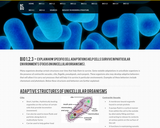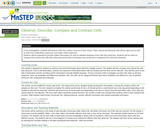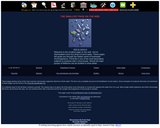
This webpage provides graphics illustrating adaptive structures and adaptive behaviors of unicellular organisms.

This webpage provides graphics illustrating adaptive structures and adaptive behaviors of unicellular organisms.

In this investigation, students will observe cells from various sources of their choice. Plant, animal and bacterial cells will be observed as well as cells from multicellular organisms and single celled organisms. Students will be expected to provide written descriptions as well as detailed drawings of the cells they observed. Students will be asked to compare and contrast the cells they observed and provide a technique they would use to categorize the cells they observed.

In this lesson, students will learn how the components of a cell operate as a system. Students will discuss the meaning of the word "system" and then apply the definition to their observations of a paramecium, noting that the single-celled organism is only alive because all the components work together. They will also examine prepared slides of human body cells and compare to the paramecium.

This website provides information and pictures of the most common organisms that live in fresh water.

Students will complete the different components of the Hyperdoc to learn more about unicellular and multicellular organisms.